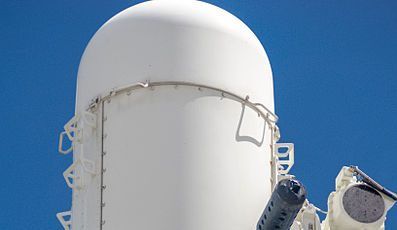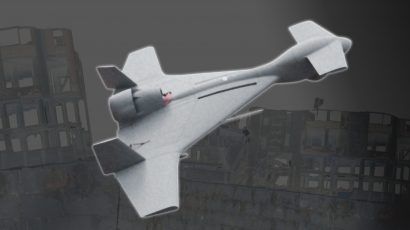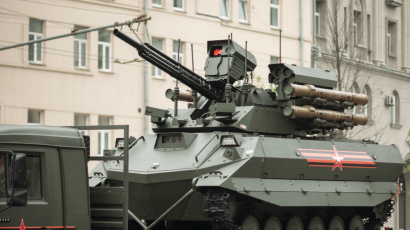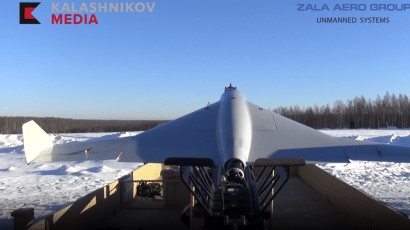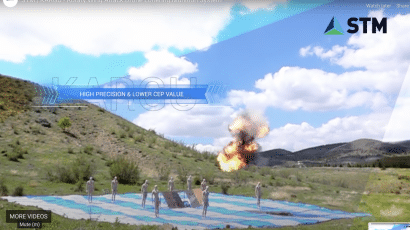Search results for autonomous weapon
Ban killer robots? How about defining them first?
There's a lot of talk about regulating autonomous weapons, but thoughtful, effective policy will be difficult to make if we can’t even agree on what they are
Manifestos and open letters: Back to the future?
Why UN discussions on the management of lethal autonomous weapons need greater participation by the scientific and research communities and representatives of the private sector. Statements of alarm are not enough.
Top US Army official: Build AI weapons first, then design safety
A top US Army official advocates for lethal autonomous weapons.
The United Nations and the future of warfare
The United Nations has debated whether to ban lethal autonomous weapons for years now. As countries make rapid progress in the autonomous capabilities of weapons systems, will any ban be too late to prevent these weapons from being used at borders or in war?
Killer robots reconsidered: Could AI weapons actually cut collateral damage?
Although activists are calling for an international ban on lethal autonomous weapons, incorporating AI into weapons systems may make them more accurate and result in fewer civilian casualties during war.
To kill killer robots, a brief boycott
If your university partners with a defense contractor to research autonomous weapons, do not expect AI researchers to sit still for it.
Dog catchers, drone swarms, anti-vaxxers, gain of function, and more: Some of our best 2021 disruptive tech stories
The Bulletin produced a lot of great coverage of biosecurity, lethal autonomous weapons, and more. Take a look at some of our best disruptive technology stories of the year.
Semi-autonomous and on their own: Killer robots in Plato’s Cave
To forestall threats from future killer robots, don’t ignore today’s “semi-autonomous” weapons
In Syria, Russia found the chance to showcase its swagger–and its robot weapons
The Syrian civil war gave Russia the chance to test and purportedly improve its robotic and autonomous weapons. Weapons makers showcased some of their products at a recent convention in Moscow.
The United States should drop its opposition to a killer robot treaty
Active US engagement in negotiating a relatively modest treaty offers the best hope for mitigating the humanitarian risks of autonomous weapons.
Russia may have used a killer robot in Ukraine. Now what?
If open-source analysts are right, a loitering munition capable of using AI to pick a target--a killer robot--was used in the Russia-Ukraine conflict. Autonomous weapons using artificial intelligence are here. And what’s more, the technology is proliferating fast.
If a killer robot were used, would we know?
After a recent UN report suggested that a Turkish-made Kargu-2 had autonomously hunted down retreating troops in Libya, numerous media outlets devoted coverage to the issue of so-called lethal autonomous weapons. But much of the coverage misses an important point: It will be extremely difficult to verify if and when such a weapon is used.
One nuclear-armed Poseidon torpedo could decimate a coastal city. Russia wants 30 of them.
Russia's nuclear-armed autonomous torpedoes Poseidon may never be used. But they may still provoke uncertainty, speculation, and fear.
Giving an AI control of nuclear weapons: What could possibly go wrong?
If an autonomous nuclear weapon concluded with 99 percent confidence a nuclear war is about to begin, should it fire?
Listen up, UN: Soldiers aren’t fans of killer robots
Surprisingly, people serving in the US military are less likely than the general public to support using unmanned vehicles in military operations, even when doing so could save soldiers’ lives.
Was a flying killer robot used in Libya? Quite possibly
The Turkish made Kargu-2 drone can operate in autonomous mode and may have been used to attack retreating soldiers fighting against the UN-recognized government in Libya. There's an ongoing global debate about these sorts of weapons, and the Kargu-2 is evidence that it's happening none too soon.
